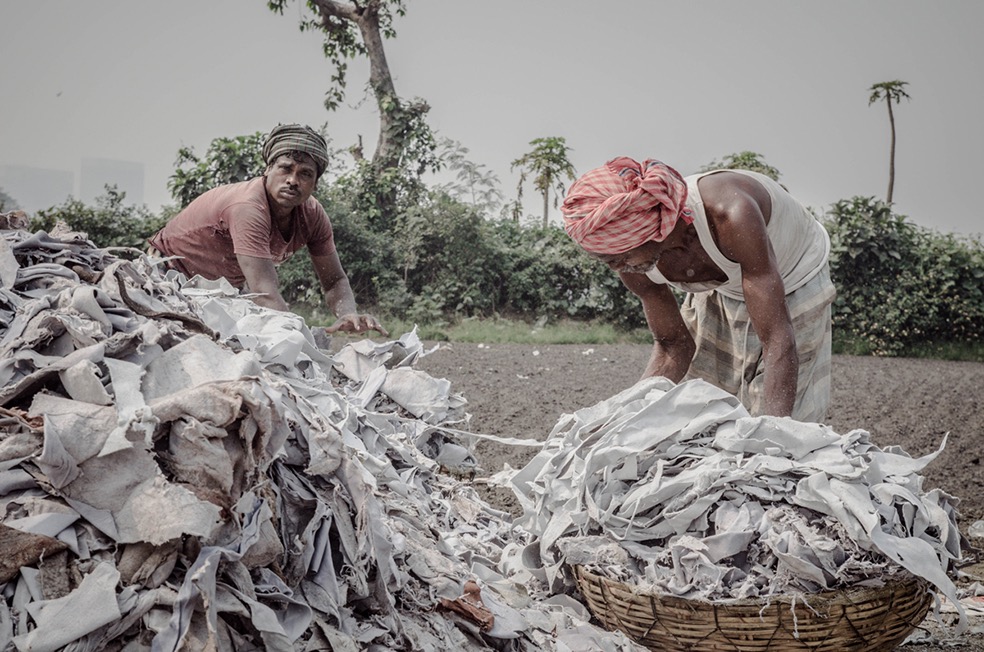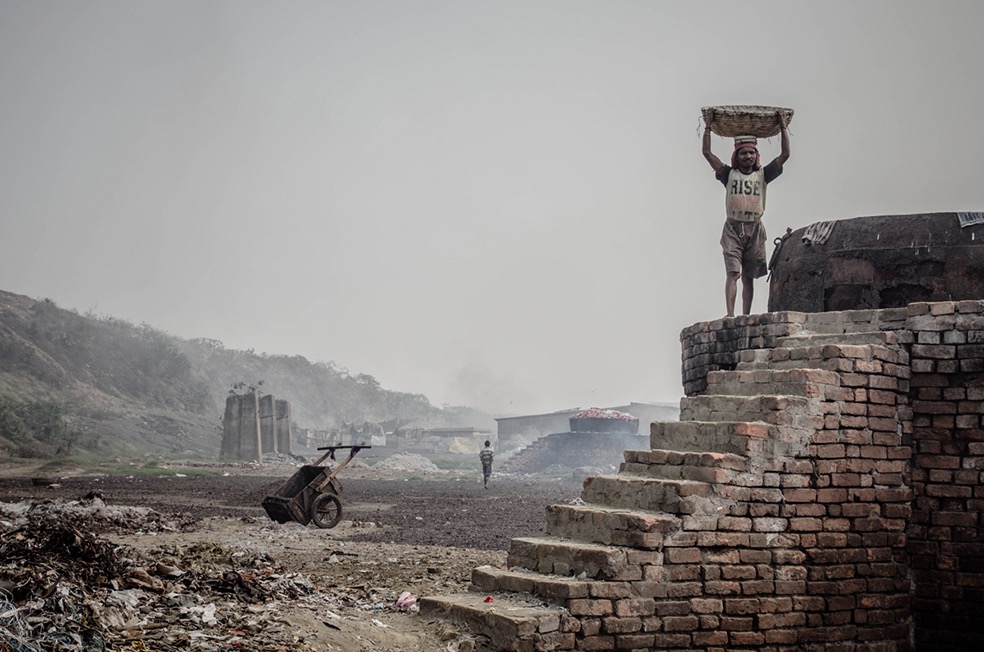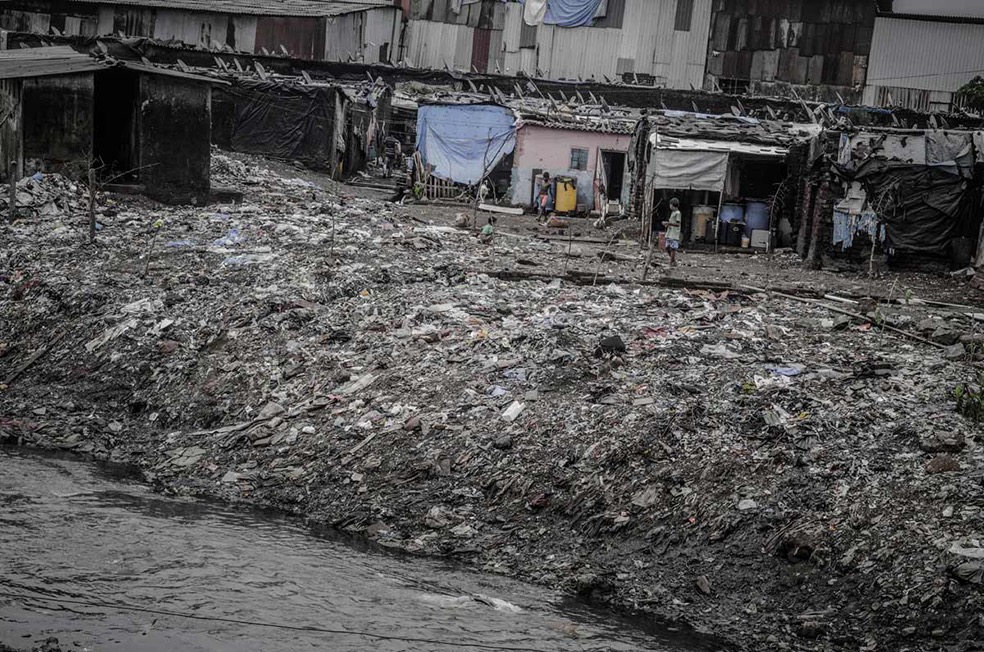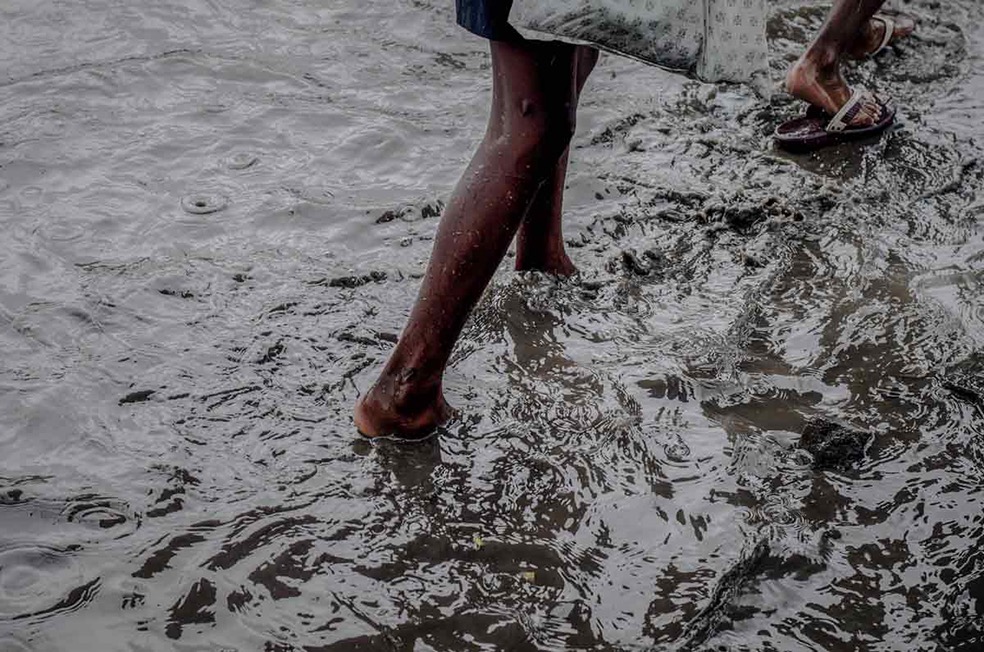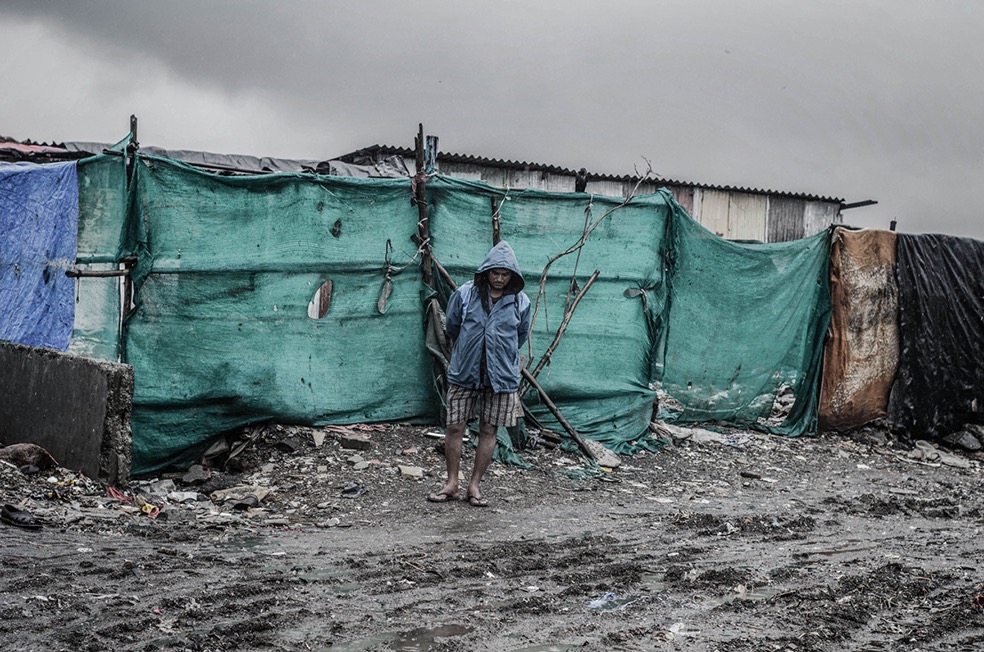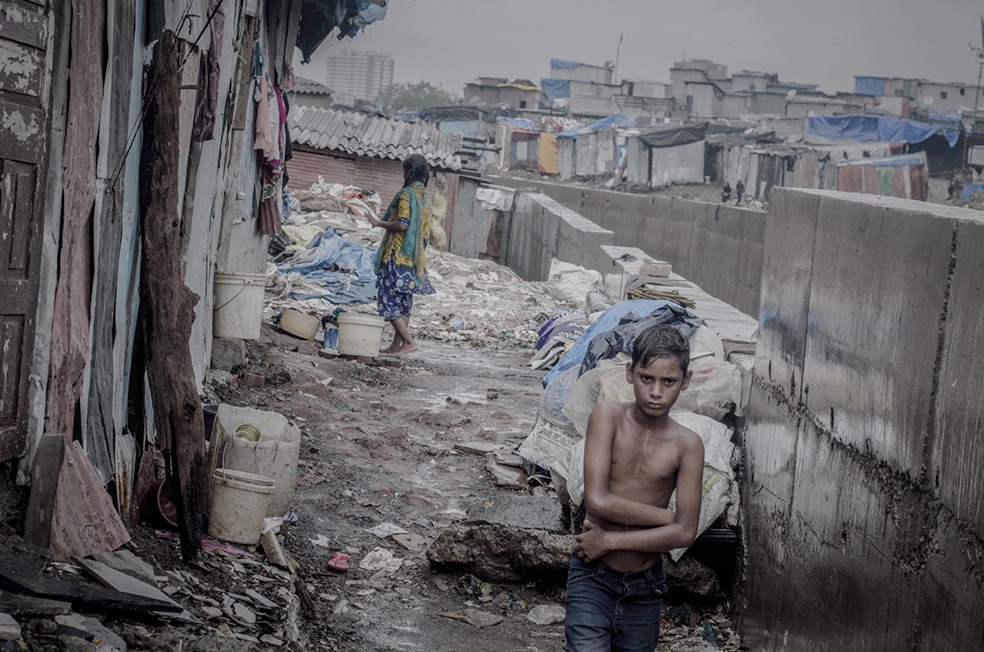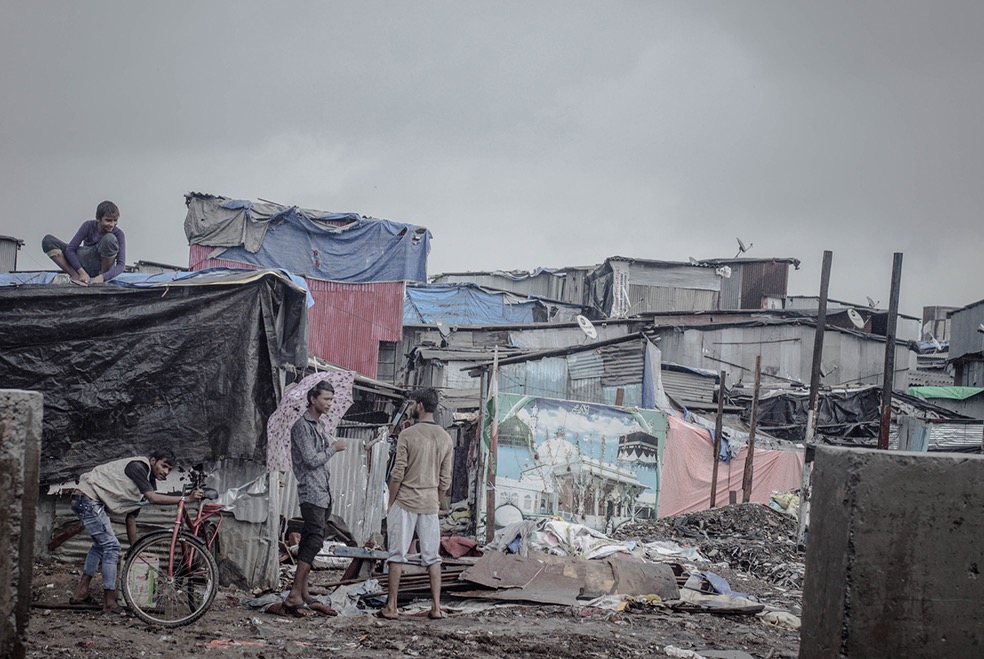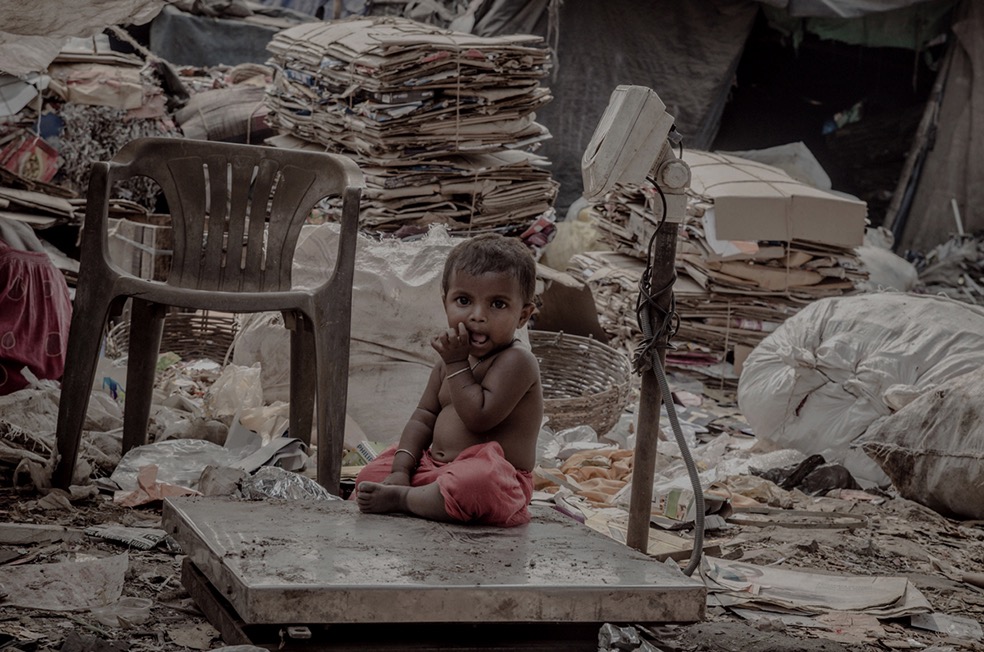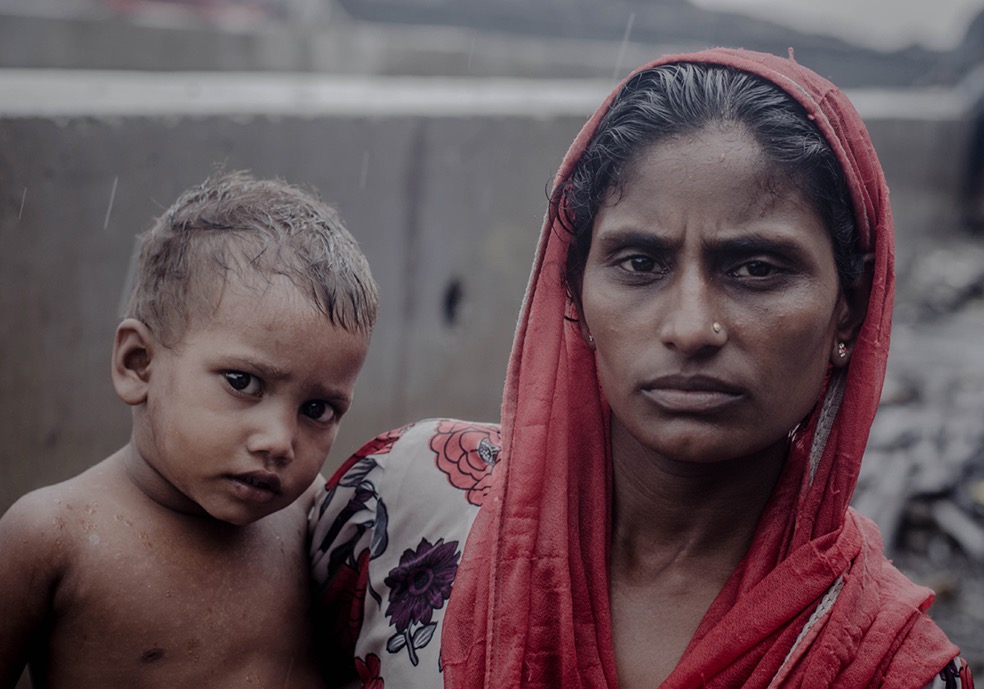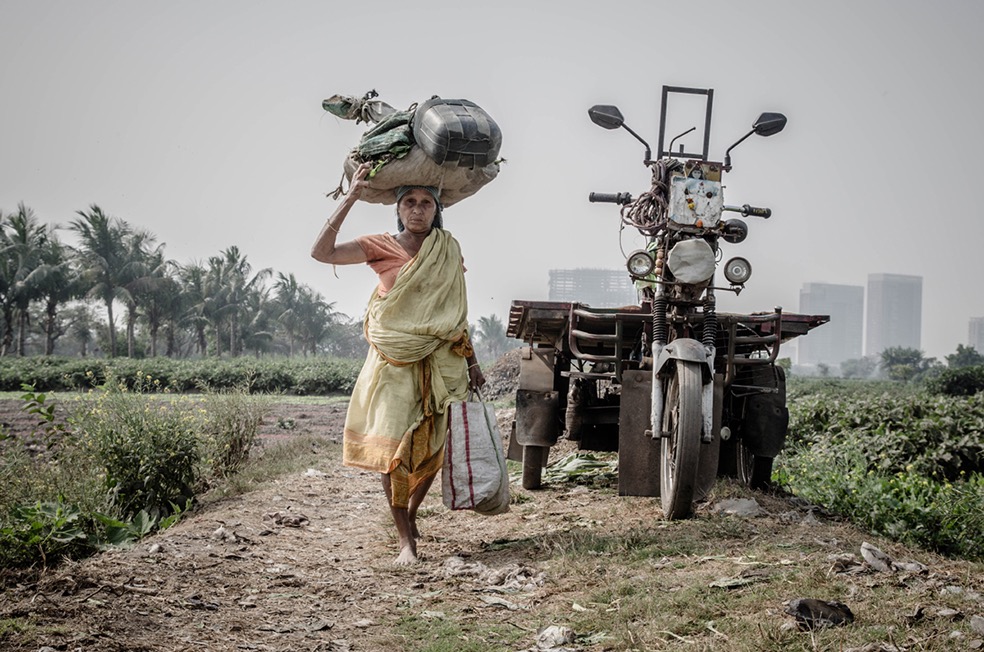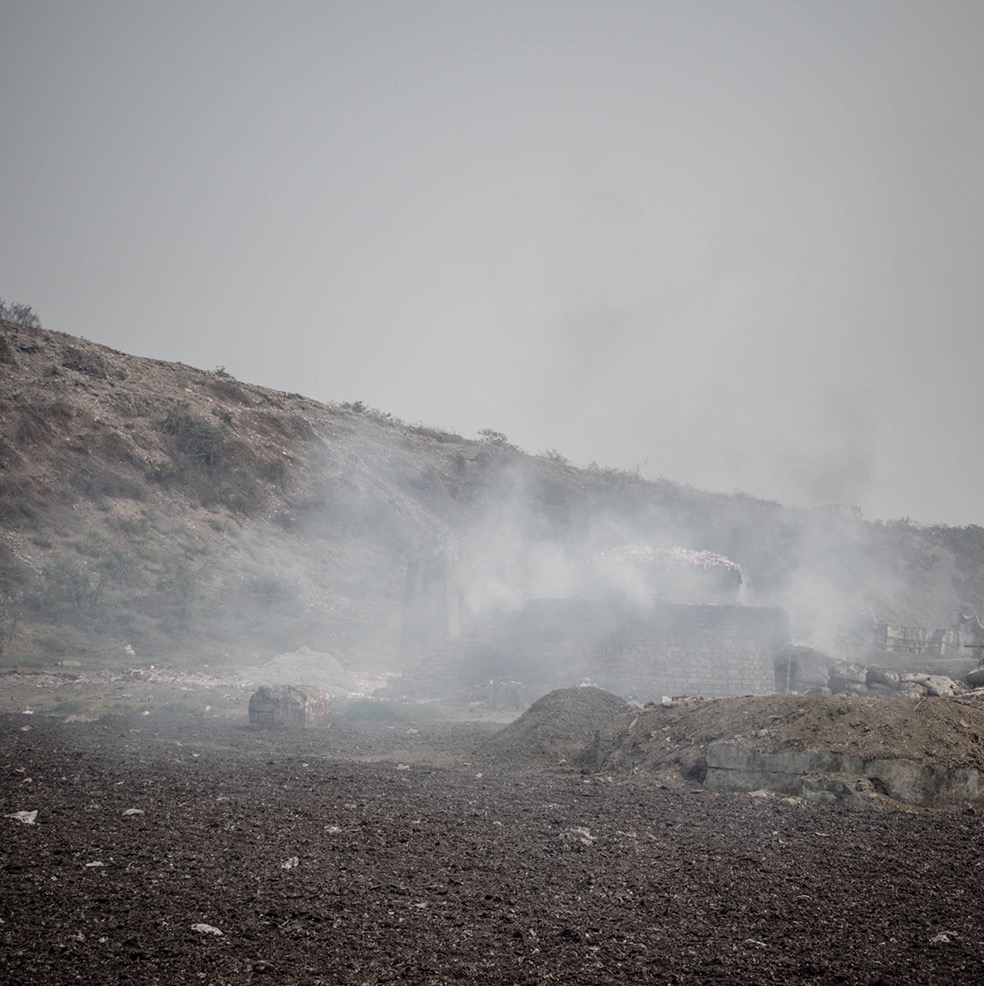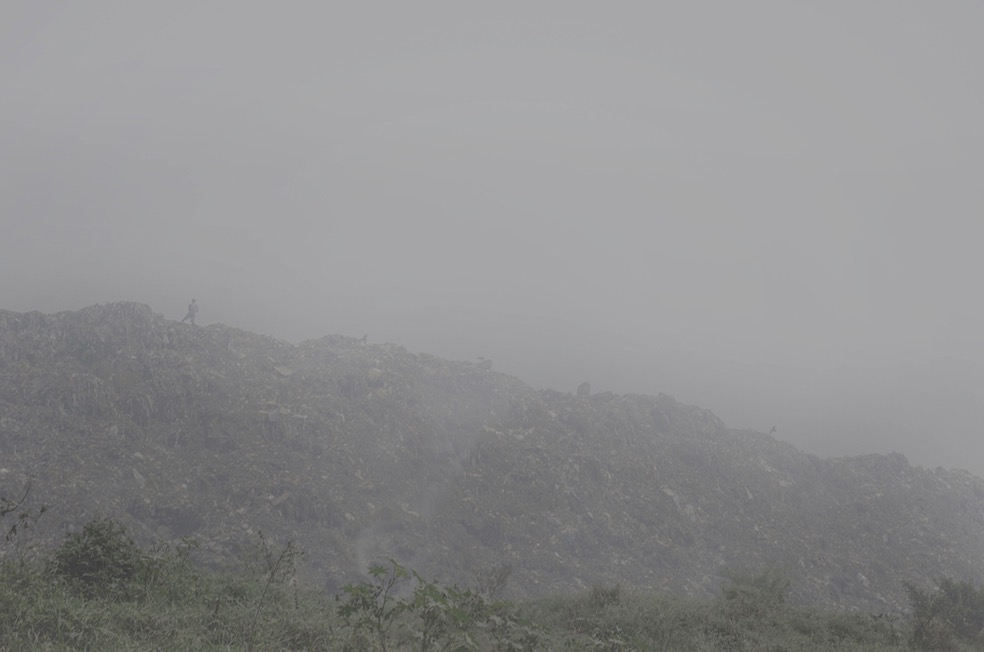This work is an extensive long-term research oriented work on the wastelands of major urban cities in a developing country like India with an ever increasing population catering to the growing needs of consumerism .The focus of this work is mainly centred around the lives of people living near these vast wastelands filled with waste and dirt, living in squalor in the most unhygienic of conditions and amidst lost hopes and broken promises.
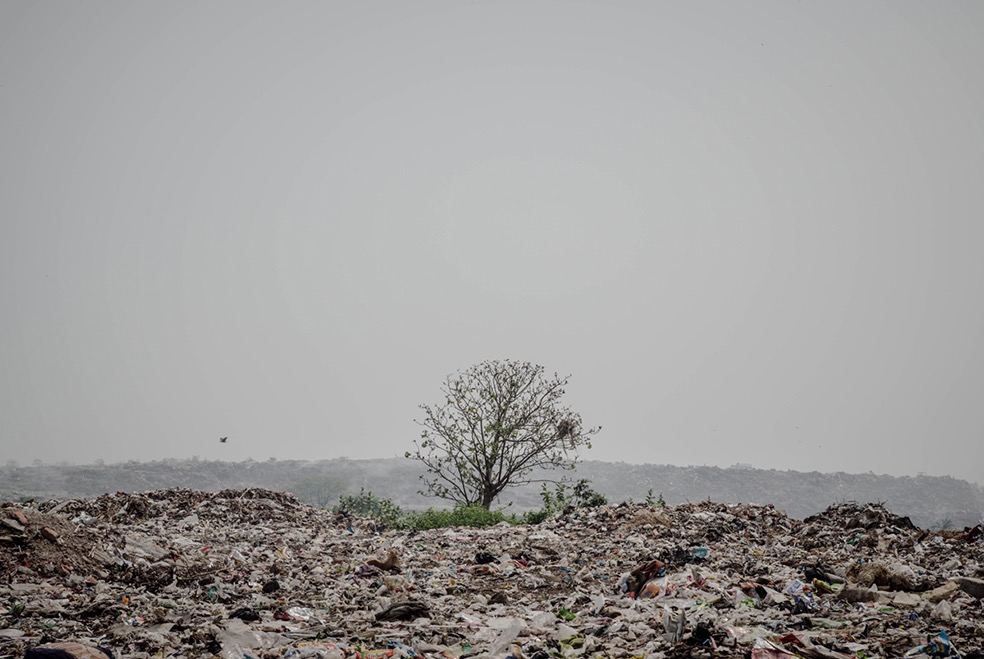
In a country like India, of the national land area of 3,166 lakh hectares, 15% is categorized as wasteland. It encompasses a diverse set of states with some having an overwhelming area as waste while some lacking an inch that could be called wasteland. The wastelands in some of the major urban cities now serve only one purpose- dump yards for the several thousand metric tonnes of daily urban consumer waste. For the most part, there is no way to segregate them and the people who work in these wastelands are exposed to all types of hazardous substances too. There is no safety precautions of gloves, or masks to shield the workers from toxic fumes of burning products(often batteries and plastic and leather) or dangerous sharp objects or dead carcass. The people who work here are mostly migrant workers who have shifted to the city in search of a better option, only to find themselves lost amidst the squalor and the disparity. Most of the people living in the cities and apparently belonging to the upper middle class consider these people to be from the lowest rungs of the society. Yes, they are Dalits- most of them belong to the lower “classes” of the society and so the hoi-polloi have taken it for granted that these people would be clearing our wastes and working and living in filth .After interviewing the people of the community in different places, it was observed that most of them resonated with the same voice-feeble, unheard and desolate. The community that has developed around these regions mainly comprise of the Dalits and Muslims. Most of them are migrant workers whose daily income is much less than the global average minimum. They have houses that are no less than roofed tin boxes covering with one room housing several families and even more(8-10 members). On top of it, is the menace of flies and vector borne diseases, unhealthy drinking water that is mixed with the ground water ,lack of health infrastructure in the communities .The monsoon is one of the worst time, especially in places where drainage is poor, like in Mumbai.

These people have clearly an uncertain future- most of these dumping sites are operating way beyond their capacity, the Deonar dumping ground in Mumbai, one of the oldest, has outlived its capacity and the Dhapa dumping ground in Calcutta also has the same fate. In some places, the land has been given to private contractors for construction of other property as a result of which people might have to be displaced again. There have been talks by state governments and municipal bodies to convert some of these wastelands into energy conversion plants ,but nothing concrete has come up yet .Also, where will these people go once a plant comes up is a matter of concern? Do they even have a better future ? All these questions will never have answers, as we continue to generate waste and take life for granted.

The project was initially started in the region in Calcutta which once used to be a wetland known as the East Calcutta wetlands .The dumping ground became functional in the mid 80s and since then daily it has been exploited and use increased exponentially over the past decade or so, thus gradually decreasing the area of fertile land also and the proportion of water-bodies. All of this has a counter-productive effect on the climate also, also exposing cities near the sea to increased flooding .
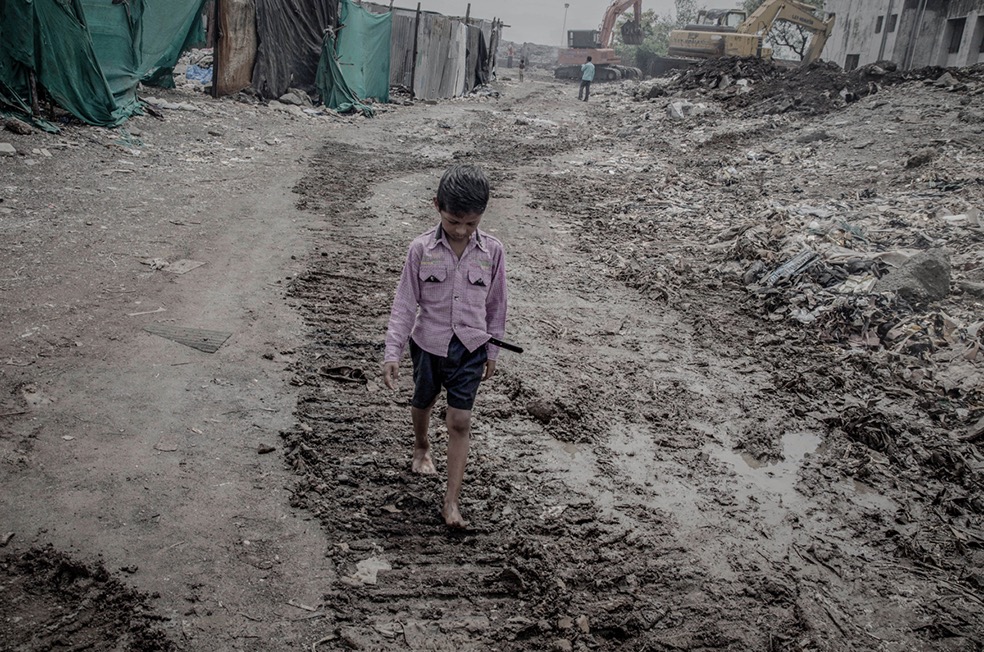
The intent for the long-term work is to showcase the dismal situation across India in spheres of waste management and how humans themselves bear the brunt of their growing consumerism and abject ignorance towards other people. It is a vicious cycle involving power, money, class divide all moulded together under the veneer of crony capitalism.
“In this universe we are given two gifts: the ability to love, and the ability to ask questions. Which are, at the same time, the fires that warm us and the fires that scorch us.”
~ Mary Oliver.
All that is intended through the work is to ask questions and look for answers which many people have been deprived of .
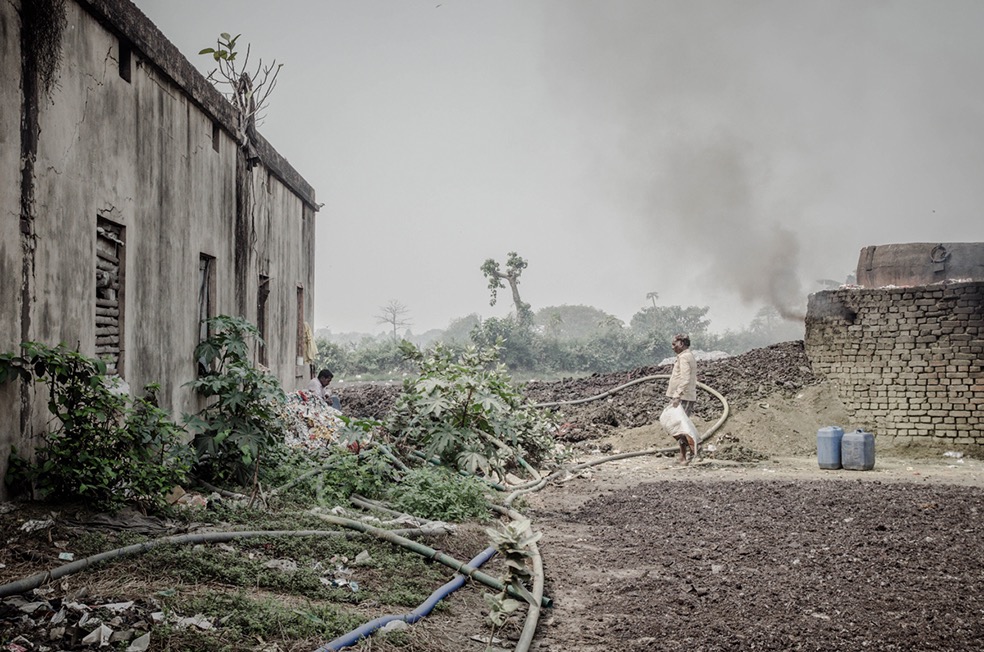
Debmalya Ray Choudhuri (aged 24) started this work as a commissioned project for Oxfam India, eventually making it a personal one and now intends to cover the situation in northern India metros. He works as a freelance storyteller and is associated with several NGOs working for human rights and poverty .
He has won numerous awards and his pictures have been published in both national and international platforms like Dodho, MonoVisions, The Guardian, BBC, National Geographic, Better Photography India among others. He was also selected for the prestigious Invisible Photographer Asia Mentorship 2016 ,Singapore and has exhibited in places in India and outside, like the India Habitat Center ,etc. He focuses on creating a unique voice and using photography as an interface to not only confront adversities in the external world ,but also in his internal mind space through work that is a blend of both the traditional and the unconventional artistic.
Website: instagram.com/debmalyachoudhuri
